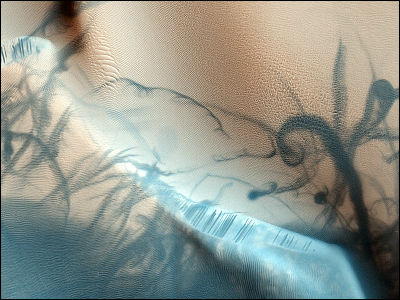Amateur astrophotographer discovers hidden spy satellite

An amateur astrophotographer has managed to capture part of a secret 'spy satellite.'
SomeAstroStuff - Felix Schöfbänker's Gallery - AstroBin
Caught on camera: Satellite tracker photographs secret spacecraft | Space
https://www.space.com/secret-satellites-caught-on-camera
There are satellites in space with a variety of missions: some listen for radio waves to detect missile launches, others use optical systems to get close-up views of specific areas, or scan the Earth using powerful radar technology.
Some amateur astrophotographers enjoy photographing these moons as a hobby, including Felix Scheffencker from Austria.
Shevvenkar successfully photographed five reconnaissance satellites equipped with a 'Future Imaging Architecture (FIA) radar' called 'Topaz.' According to Shevvenkar, the FIA radar can 'see' the ground day and night, and is thought to be installed on a large satellite with a parabolic antenna estimated to be about 12 meters in diameter and two solar panels with a wingspan of about 10 meters.
Based on Shefvenker's interpretation, satellite enthusiast Oliver Jankovic created the following image:

by Felix Schöfbanker
Below is a satellite that appears to be the FIA radar actually photographed by Chef Benker.

by Felix Schöfbanker
'The satellite has solar panels, and we can see another bright object between the solar panels, which we interpret as an uplink and downlink antenna. It could be something else,' said Shefvenker. According to Shefvenker, the satellite may be sending out many pulses, receiving the returned signal, and converting the signal into an image.
The FIA radar can point either left or right relative to the orbit, and Shefvenker said the antenna was pointed left only six times and right 22 times.
'The oldest satellite in orbit as of 2024 is the third-generation KH-11 , launched in 2005, called USA186. There are two other satellites, called USA224 and USA245, which are fourth-generation satellites launched in 2011 and 2013. The newest is a fifth-generation spacecraft launched in 2021, called USA314,' Shevvenkar noted. These satellites are said to have mirror-like panels.

by Felix Schöfbanker
'The size of the mirror seems to change with each generation. The oldest KH-11 is 2.4 meters, while the fourth generation is around 3 meters in diameter. The panel could be a radiator that acts as a cooling system for the infrared imaging system, or a phased array antenna that could be used for SAR imaging or signals intelligence, or even a solar panel,' Shevchenkar said.
'Most major countries have observatories that specialize in this kind of photography, and considering how much money they have available to spend on those, I'd say they have images that are several times better than the one I took,' Shefbenker said of the amateur astrophotographer's ability to capture the blurry photos of the spy satellite.
Related Posts:
in Hardware, Posted by log1p_kr







